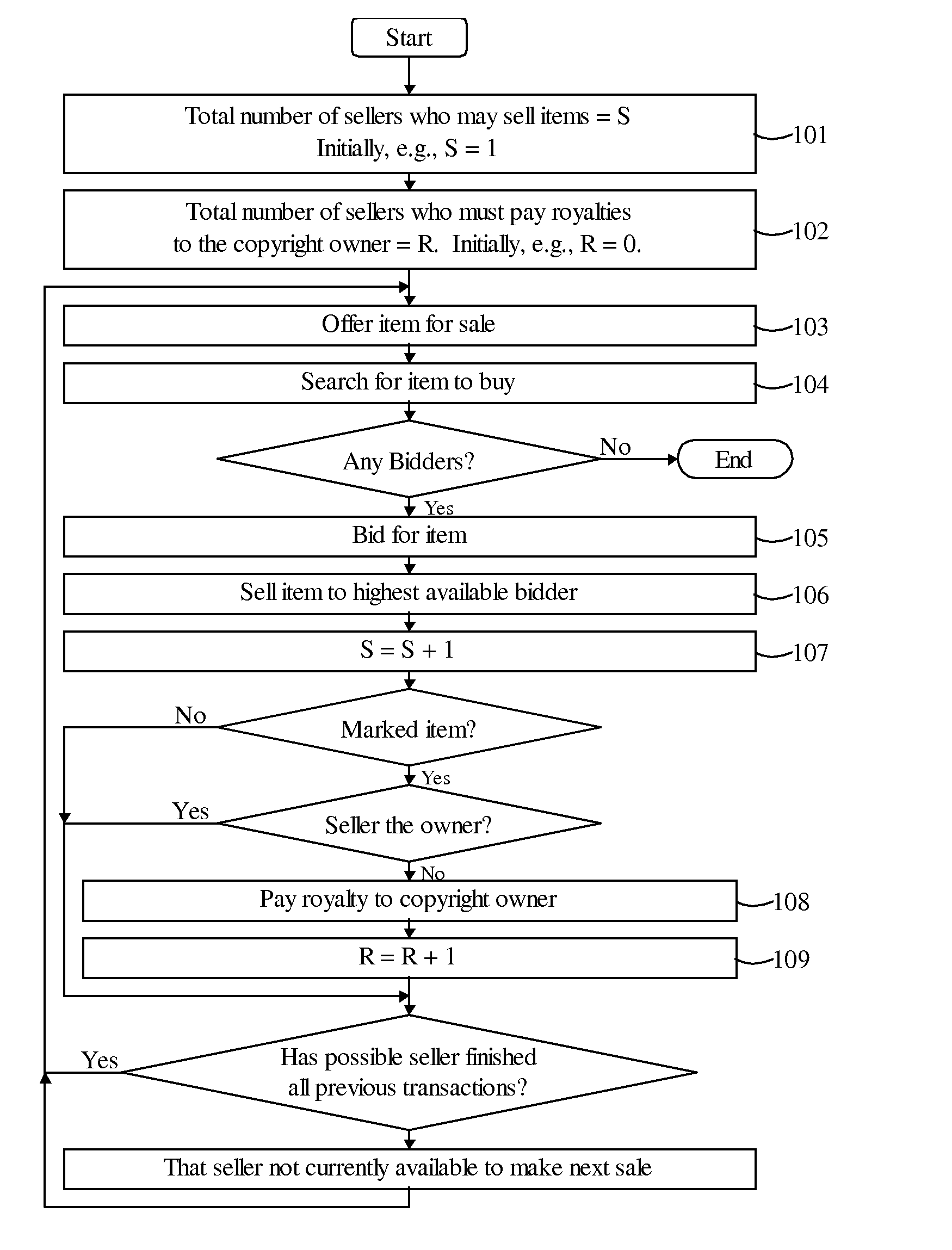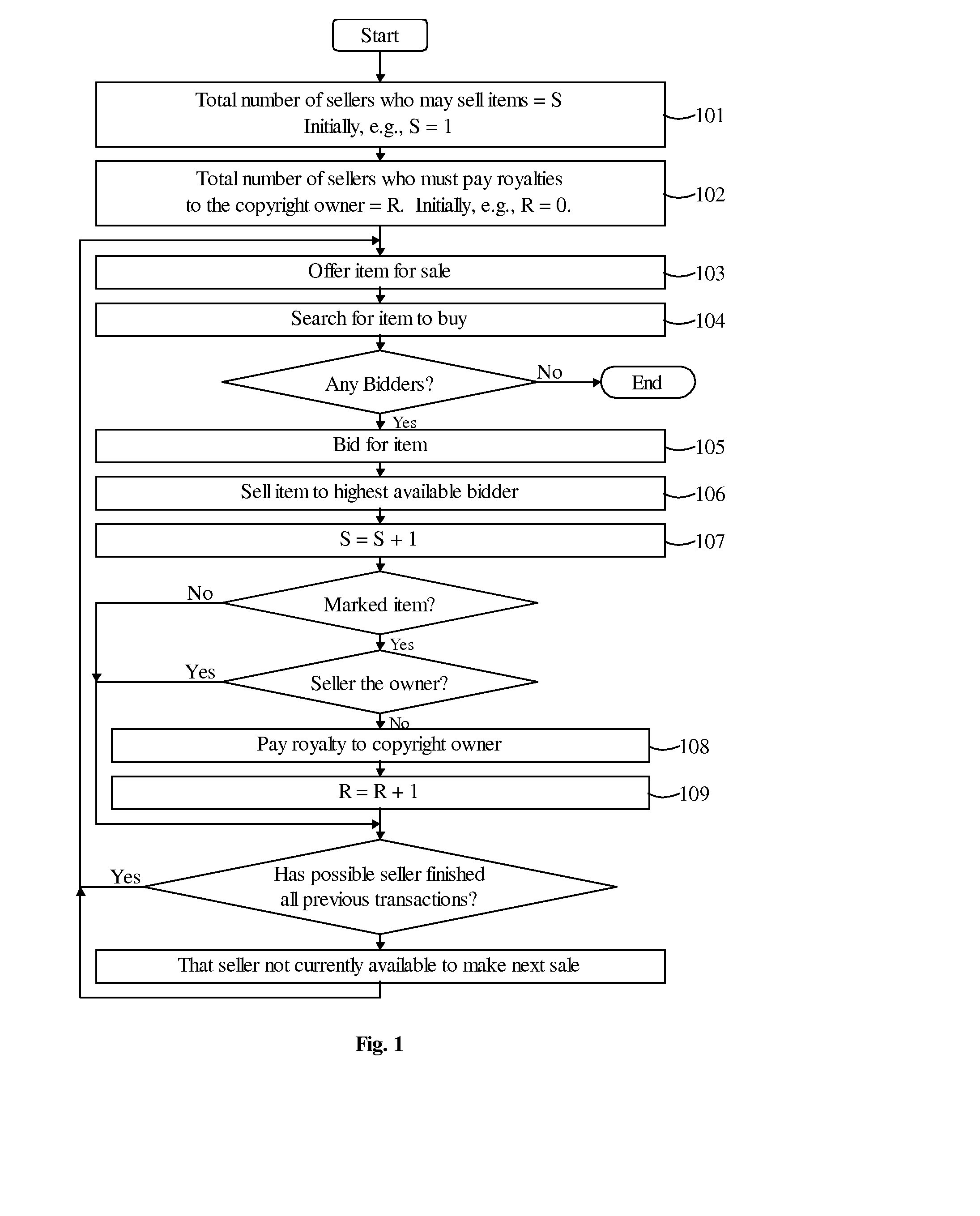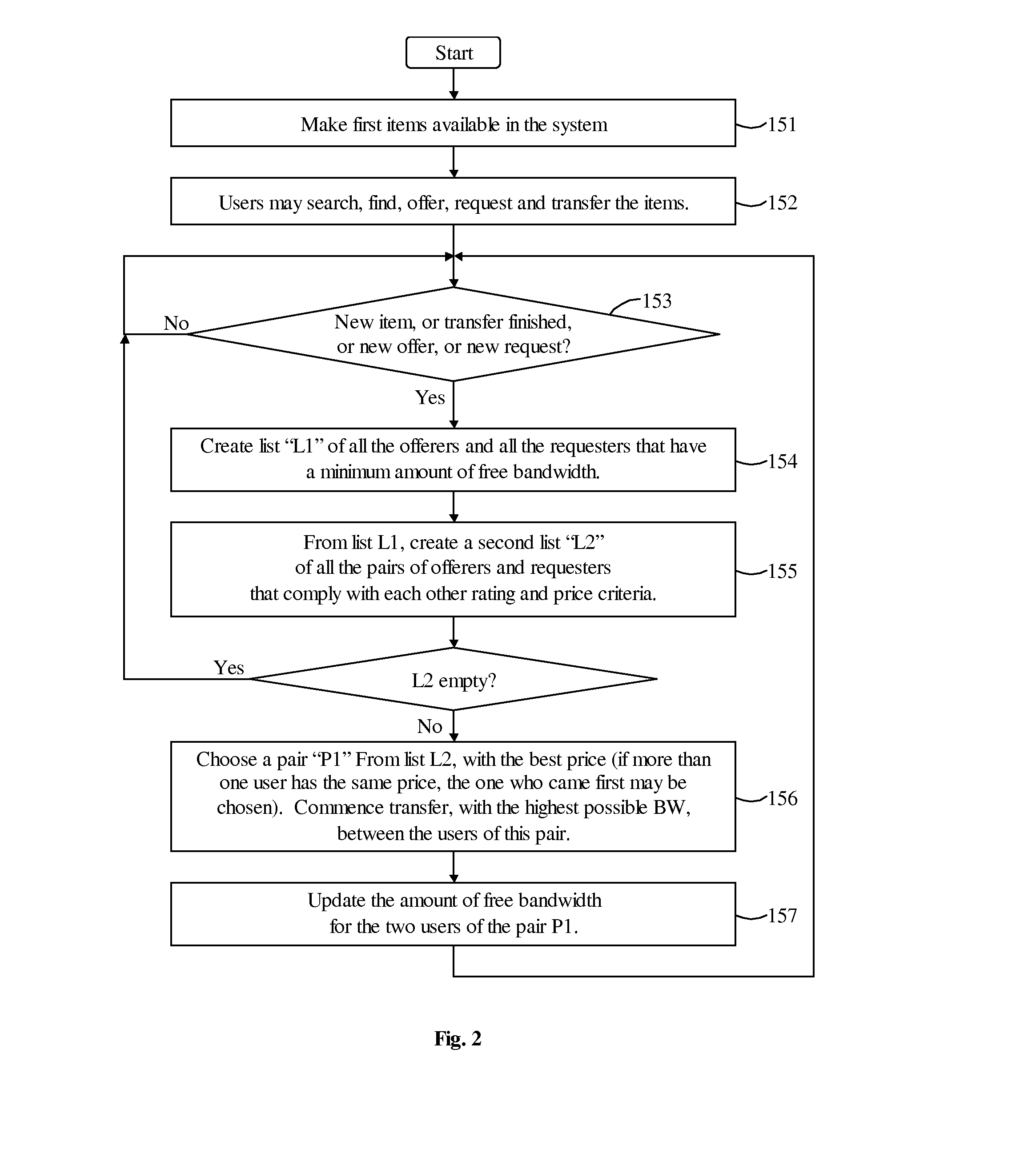System and method for digital item exchange
a technology of digital items and exchange methods, applied in the field of systems and methods for the search, find, arrange, request, transfer, exchange and exchange of digital items, can solve the problem that users do not offer items, and achieve the effect of optimizing the utilization of network peers' resources and maximizing rewards
- Summary
- Abstract
- Description
- Claims
- Application Information
AI Technical Summary
Benefits of technology
Problems solved by technology
Method used
Image
Examples
Embodiment Construction
[0080]Reference is now made to FIG. 1, which illustrates a method for exchange of items in accordance with a preferred embodiment of the present invention.
[0081]The total number of sellers who may sell the item is represented as S. Initially, S may equal one, as in the case that the item is originally offered for sale by the copyright owner (step 101). The total number of sellers who must pay royalties to the copyright owner is represented as R. Initially, R may equal zero, such as before any non-copyright owner purchasing the item (step 102). An item marked as copyrighted is also referred to as a marked item. It may be noted that, in general, R equals S minus the number of copyright owners of the item. Alternatively, everyone, including the copyright owners, may pay royalties when selling the item.
[0082]The item is then offered for sale (step 103). The offer for sale may have conditions, such as but not limited to, a minimum selling price, a minimum number of bidders (e.g., if ther...
PUM
 Login to View More
Login to View More Abstract
Description
Claims
Application Information
 Login to View More
Login to View More - R&D
- Intellectual Property
- Life Sciences
- Materials
- Tech Scout
- Unparalleled Data Quality
- Higher Quality Content
- 60% Fewer Hallucinations
Browse by: Latest US Patents, China's latest patents, Technical Efficacy Thesaurus, Application Domain, Technology Topic, Popular Technical Reports.
© 2025 PatSnap. All rights reserved.Legal|Privacy policy|Modern Slavery Act Transparency Statement|Sitemap|About US| Contact US: help@patsnap.com



